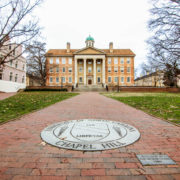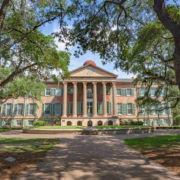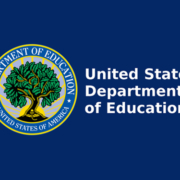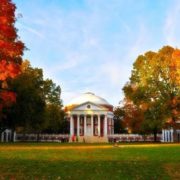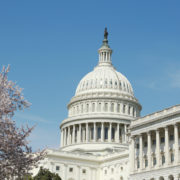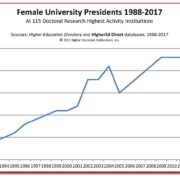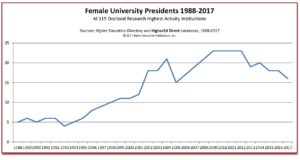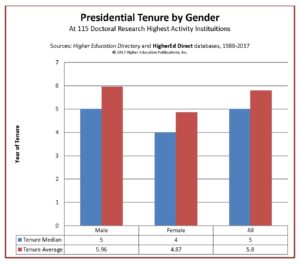Appointments
Alabama State University Names New President
Senator Quinton Ross has been appointed by the board of trustees at Alabama State to become the school’s next president. Ross previously served as a state senator for 15 years. Senator Ross was picked ahead of three other finalists for the job.
read more
Carroll University Appoints Next President
Dr. Cindy Gnadinger will become the first female president at Carroll University. Gnadinger currently serves as an executive consultant at Bellarmine University. She will succeed President Douglas Hastad, who retired in July.
read more
*Stay up-to-date with all the changing administrators in higher education with HigherEd Direct! Check out our online database—free for two weeks HERE!
President Named at MGH Institute of Health Professions
MGH Institute of Health Professions has named its 6th president after a nationwide search. Dr. Paula Milone-Nuzzo will become the new president of the independent graduate school located in Boston. She comes to the institute after serving 14 years at the College of Nursing at Penn State University.
read more
Quinsigamond CC Welcomes New President
Dr. Luis Pedraja has been appointed the next president at Quinsigamond Community College. Pedraja formerly served as the vice chancellor of academic affairs at the Peralta Community College District in California. Dr. Pedraja will be the school’s 6th president and begins immediately.
read more
Dr. Anderson Appointed at Saddleback College
Saddleback College has named Dr. Gregory Anderson to become the school’s next president. Dr. Anderson previously served in executive roles at california community colleges for the past 12 years. He was voted unanimously by the board after the resignation of former president, Tod Burnnett. Dr. Anderson will begin his tenure as president on October 16th.
read more
The University of New England Names Next President
Dr. James Herbert has been appointed the next president of the University of New England. He was inaugurated on September 9th and said, “I am incredibly honored and privileged to have this position at UNE.” Herbert previously served as executive vice provost at Drexel University.
read more
Interim President Appointed at U of Scranton
Reverend Herbert Keller has been named the interim president of the University of Scranton. Keller will serve through the next academic school year, when former president Rev. Scott Pilarz, returns to his former position.
read more
Harvard Dean Named Next UVA President
Mr. James James E. Ryan, current dean of the Harvard Graduate School of Education, has been named the next president at the University of Virginia. Ryan, 50, is a former alumnus from the UVA School of Law—where he finished at the top of his class. He will replace current president, Teresa Sullivan, in June of 2018.
read more
Retirements
Heartland Community College President Announces Retirement
Mrs. Rob Widmer has announced that he will retire from his post as president next year. Widmer has served the school for over 20 years, and began as the VP of business services in 1996. He will retire on June 30th, 2018.
read more
Retirement announced at Nashville CC
Dr. George Van Allen has announced that he will retire from Nashville State Community College. Dr. Van Allen expanded the school by adding six branch campuses during his tenure at Nashville CC. He will leave the school on December 31st.
read more
Norfolk State President to Retire
The president of Norfolk State University, Mr. Eddie Moore Jr., has announced that he will retire no later than Dec. 31st, 2017. The decision, according to Rector Dr. Byron Cherry, “Kind of caught us kind of off guard a little bit.” Moore has served the school since 2013.
read more
Longtime Oklahoma President Set to Retire
Dr. David Boren has announced that he will retire as president at the University of Oklahoma. Boren said he wanted to retire when the university was at maximum strength, and that he feels now is the time to do so. Boren has served the school since 1994. He plans to officially retire on June 30th, 2018.
read more
Massey Leaving Pitt CC
Dr. Dennis Massey has informed trustees at Pitt CC that he will be retiring at the end of the 2017-2018 academic year. Massey said, “I have been proud to lead a talented group of faculty and staff at PCC.” He has served as the fourth President at Pitt CC since 2003.
read more
Jamestown President to Retire
University of Jamestown President Robert Badal has announced that he will be retiring at the end of February, 2018. Badal has been at the school since 2002, and said he had “the rare chance to take a small but historic institution to a higher level.”
read more
Norton Retiring from the University of Northern Colorado
Ms. Kay Norton has announced that she will retire from the University of Northern Colorado at the end of June, 2018. Norton has served the school for the last 15 years, and is the longest tenured current president of four-year public institutions in Colorado.
read more
Westminster President Retiring
After 18 years serving as Westminster College’s president, Mr. Stephen Morgan has announced that he will retire at the end of 2017-2018 school year. Morgan became the president of Westminster in 2015 and plans to retire next summer.
read more
Resignations
President Resigns from Central Penn
Dr. Karen M Scolforo has resigned as president from Central Penn College. Scolforo served as the school’s ninth president for the last four years. The college cited personal reasons for Dr. Scolforo’s resignation.
read more
Nicholls State President Announces Resignation
Nicholls State University President, Bruce T. Murphy, has announced that he will resign from the school on Dec. 31st. Murphy served as the school’s 5th president and was appointed in 2013. The board at Nicholl’s state is currently looking for a successor.
read more
Spokane CC President Resigns, Interim Decided
Ryan Carstens has announced his resignation from Spokane Community college after two years at the school. SCC’s provost, Kevin Brockbank, has been appointed to serve as interim president while a search for a permanent president is performed.
read more
USF St. Petersburg Chancellor Resigns
Dr. Sophia Wisniewska has resigned from the University of South Florida St. Petersburg. Wisniewska served the school for 4 years starting in 2013. USF St. Petersburg is currently under interim leadership.
read more

